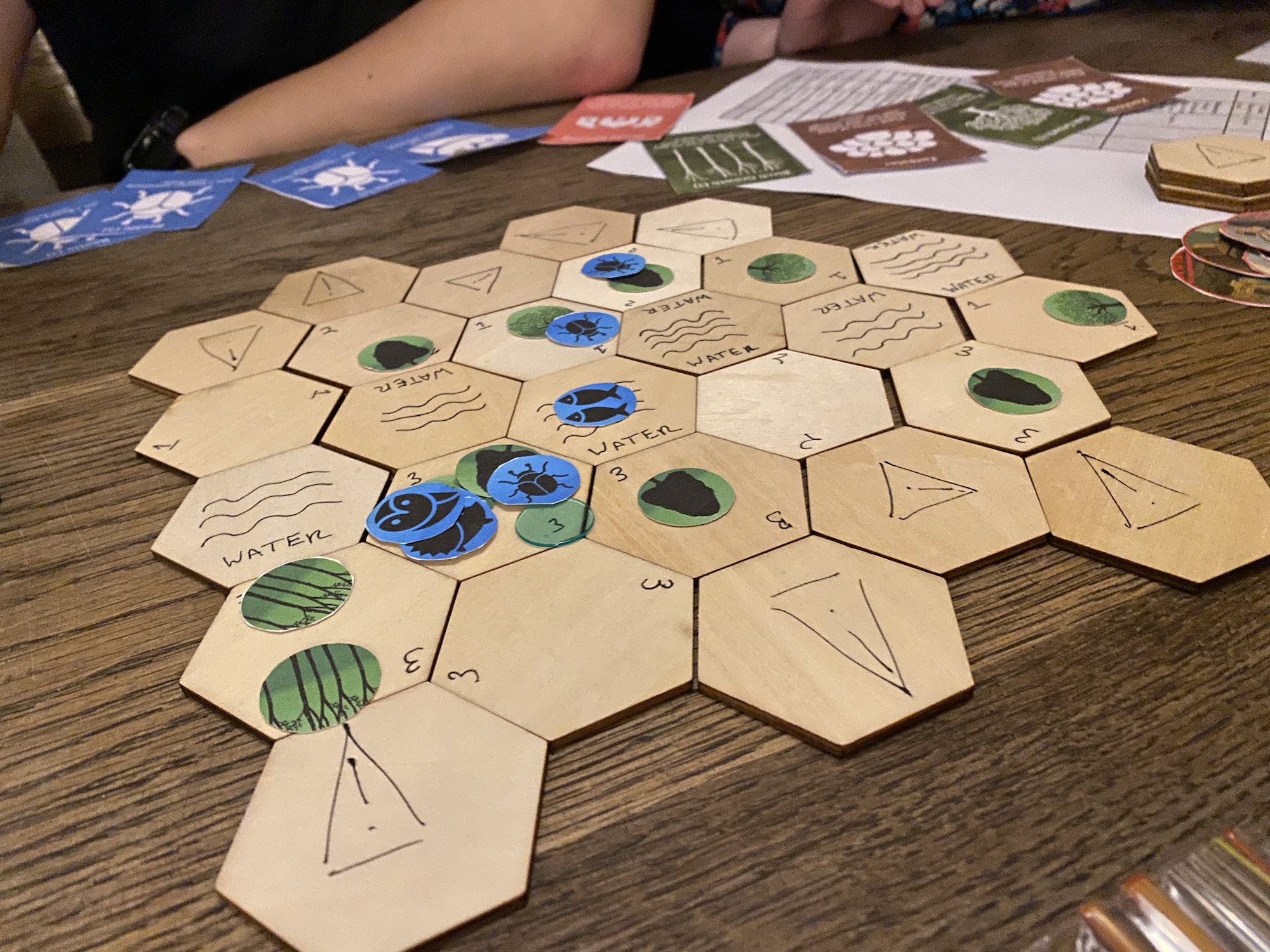Welcome to the Reforest design diary!
This is the first one of these I’ve written, and I’m excited to be sharing the process of making Reforest! with the world. I love reading other people’s design diaries and blogs but I’ve never sat down and ordered my own thoughts into one, so I hope you’ll stick with me as I learn about the process.
So here’s where we are right now: alongside many many solo playtests, I’ve now held a couple of tests with the team at Wakehurst, a public one at Chance and Counters and one with fellow Bristol based board game designers. I’ve also played it with friends, family, and Upstart team members. In total, I’ve played it with other people about ten times and maybe thirty times on my own.
So, where are we at? The overall concept seems to work, and people are enjoying its co-operative nature. The puzzle of how best to put the right species in the right place, in order to score maximum points, seems to be working out pretty well. And I’m getting a better handle on the main control system of the game – at the suggestion of Oliver and Joe, two of the Bristol boardgame designers, I’ve created a card-based system in which each player has an ever-changing set of actions they can take. This means that the game can always surprise you and you have to communicate really closely with your team-mates about what to do next.
One thing that seems to be heading in the right direction is the event system. About 20% of the cards in the deck are event cards and if you have one in your hand, you have to play it before doing anything else on your turn. So, for example, you might find that you have a Disease event card which will kill a Kingfisher – but one of your teammates is about to play the Kingfisher card. You need to figure out a strategy for how to keep that Kingfisher safe. You could try to get another event card into your hand, so you don’t have to play the disease card; or you could try to find a vet card which neutralises the disease. The game should present the players with constant puzzles, forcing you to balance the different needs of the trees, animals and people who live in and around your forest.
Writing this, I’m reminded that there can and should be ways of making the world of the game feel more dynamic. At the Chance & Counters test a couple of days ago, this fell flat a bit because I had three Crisis Manager cards in the deck. This was a bit of a get-out-of-jail-free mechanic – you could play it at any time to cancel an event immediately. The way the cards fell out on this particular night, the players were able to cancel the Construction event – which brings bulldozers into the game – three times. Which meant a pretty low-stress game for them! I’ve since done a solo test completely removing the Crisis Manager and it seems much better that way. But I do really like the idea of the Vet card I described above, as part of the problem-solving element of the game. Writing this, I’m beginning to think perhaps there should be more get-out cards, but less powerful – so that card only cancels a specific event or type of event.
I’m really enjoying the process of designing this game – there’s an exciting challenge in making it tricky, but not too hard, and another one in building the intricate network of choices players need to make. I’m going to sit down now and make these changes, and I’ll keep you posted!

